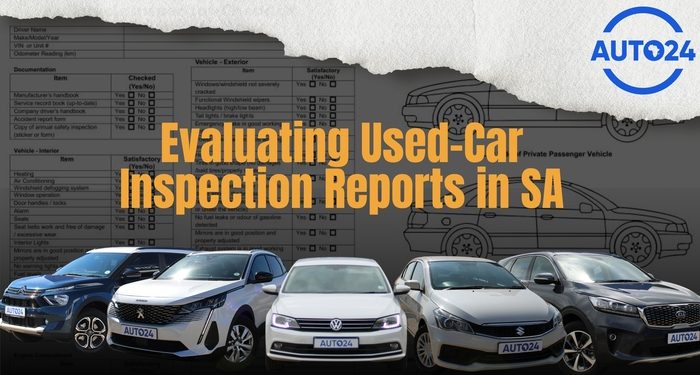What the Paper Doesn’t Always Say
In a used-car market where “excellent condition” can mean anything from pristine to patched-up, a detailed inspection report is your best defence. But reading one is more than skimming for green ticks. To truly protect your purchase, you need to understand what’s being assessed—and what might be hiding between the lines.
Let’s break down how to interpret these reports with confidence.
1. Understanding the Purpose of an Inspection Report
An inspection report offers a snapshot of a vehicle’s current state. It covers mechanical systems, safety components, and cosmetic condition. Think of it as an x-ray before you commit to surgery.
Reports typically include:
- A checklist of tested systems and parts
- Technician remarks
- Grading (pass/fail or condition scale)
- A visual assessment of the body and interior
2. Who Produces These Reports and Why It Matters
In South Africa, inspection credibility varies depending on the source:
- Franchise dealers often provide internal reports to back their certified used programs
- Independent services (like Dekra, AA) offer third-party assessments
- Buyers can hire private inspectors for added objectivity in private sales
The more independent the source, the more likely you are to get an unbiased assessment.
3. What to Look for in the Fine Print
Don’t just rely on the summary—dig into the report for:
- Brake test results: Any mention of vibration, long stopping distances, or imbalance
- Suspension wear: Look for notations on bushing cracks, uneven tyre wear, or rattling
- Electrical checks: Lights, windows, infotainment, and sensors must function properly
- Rust or body filler detection: Indicates prior damage or poor storage conditions
- Engine codes or errors: Many inspections include basic OBD scans now
Even one minor issue might justify a better deal.
4. Warning Signs and What They Could Mean
Pay attention to vague or concerning notes:
- “Further assessment needed” can mean the inspector didn’t finish or couldn’t access a system
- “Panel replaced or repainted” might suggest past accident repairs
- “Oil seepage” can signal minor gasket wear—or mask a deeper issue
- “Non-OEM parts” might indicate cheaper repairs or modifications
Follow up directly with the seller about anything unclear.
5. Why the Report Isn’t the Whole Picture
No matter how detailed, a report won’t show:
- Whether parts were replaced with genuine components
- Full accident history (especially if damage was repaired privately)
- How the car was driven or maintained day-to-day
This is why combining the report with a test drive and full service record review is essential.
6. Use It as Your Bargaining Chip
An honest report gives you leverage:
- Ask for problem areas to be repaired before signing
- Negotiate a discount for any work required
- Avoid cars with flagged structural or safety issues
In a competitive used-car space, this edge matters.
Conclusion: Read Between the Lines, Not Just the Lines
Inspection reports are useful—but they’re only as powerful as your ability to interpret them. Read with a critical eye, ask questions, and don’t be afraid to walk away if the story doesn’t add up.
The best deals go to buyers who read the report like a mechanic, not a marketer.





